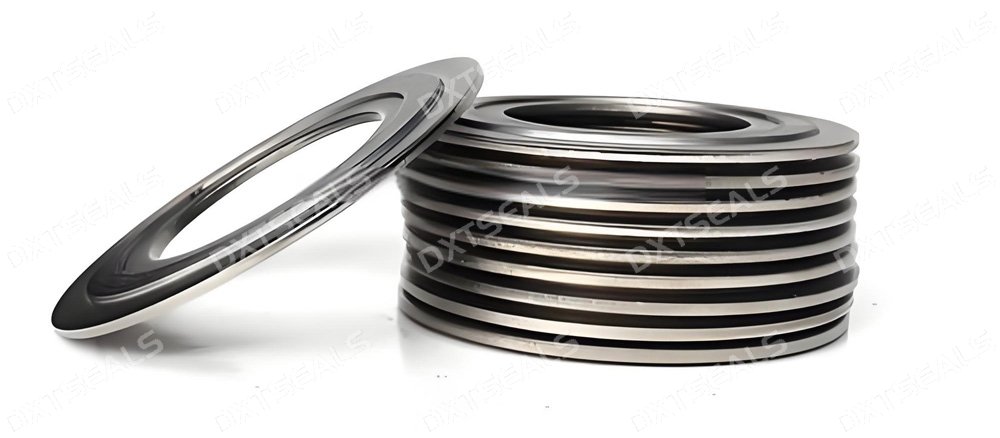Introduction
In high-pressure systems, proper sealing is critical to ensuring safety, efficiency, and reliability. One of the key components responsible for maintaining these high-pressure seals is the flange gasket. Flange gaskets are designed to prevent leakage between flanged connections by providing a tight, reliable seal.
Whether used in oil and gas, chemical processing, or power generation, these gaskets play a vital role in maintaining pressure integrity, preventing fluid or gas leakage, and reducing the risk of system failures. In this article, we will explore why flange gaskets are essential in high-pressure applications and discuss the best materials and considerations when selecting gaskets for such demanding environments.
1. The Role of Flange Gaskets in High-Pressure Applications
Flange gaskets act as a barrier between two flanged surfaces, preventing the leakage of fluids, gases, or other substances under high-pressure conditions. In high-pressure systems, the forces exerted on the flange connections can be immense, which means that the gasket must maintain a secure seal even when subjected to extreme stress.
Without the right flange gasket, the risk of leaks can significantly increase, leading to inefficiencies, system downtime, and even safety hazards. This is why it is crucial to choose the right material and design for your application.
2. Why High-Pressure Systems Need Specialized Gaskets
High-pressure systems operate in demanding conditions where even the smallest leak can have serious consequences. Here's why specialized gaskets are necessary:
- Leak Prevention: High-pressure environments require a gasket that can withstand pressure forces without failing. A high-quality flange gasket ensures that no fluid or gas escapes, which is crucial for system performance and safety.
- Durability: Flange gaskets used in high-pressure systems need to be made from durable materials that can handle extreme conditions over time. Gaskets that degrade quickly under pressure can compromise the integrity of the entire system.
- Sealing Efficiency: In high-pressure systems, even the smallest imperfections in the seal can lead to pressure loss. The gasket needs to conform to the surface of the flanges to create an even, leak-proof seal.
3. Best Gasket Materials for High-Pressure Applications
The material used for flange gaskets plays a crucial role in ensuring a reliable seal under high-pressure conditions. Some of the best gasket materials for these applications include:
a) Metal Gaskets
Metal gaskets are highly effective in high-pressure environments, particularly in applications that involve extreme heat and pressure. These gaskets are often made from materials like stainless steel, Inconel, or titanium, which offer exceptional strength, durability, and resistance to high-pressure and high-temperature environments.
- Spiral wound gaskets are commonly used in high-pressure systems due to their flexibility and ability to create a tight seal under varying pressure and temperature conditions.
- Ring-type joint (RTJ) gaskets are designed specifically for high-pressure applications and are frequently used in industries like oil and gas and petrochemical processing.
b) PTFE (Polytetrafluoroethylene) Gaskets
PTFE gaskets are an excellent choice for chemical resistance and high-pressure environments. PTFE can handle both high-pressure and high-temperature conditions, making it a versatile material for industries where aggressive chemicals are involved, such as chemical manufacturing and pharmaceutical production.
PTFE’s non-reactive nature ensures that it does not degrade when exposed to a wide range of chemicals and maintains its sealing performance under pressure.
c) Compressed Fiber Gaskets
Compressed fiber gaskets made from materials like asbestos-free fibers and rubber binders are often used in medium- to high-pressure applications. These gaskets are a cost-effective option for pressure systems that don't involve extreme temperatures but still require reliable sealing. They are commonly used in industrial and mechanical systems.
4. Factors to Consider When Selecting Flange Gaskets for High-Pressure Applications
When choosing the right flange gasket for high-pressure applications, several factors should be taken into account:
a) Pressure Rating
Each gasket material has a specific pressure rating that indicates the maximum pressure it can withstand without compromising its sealing performance. Be sure to choose a gasket that matches or exceeds the pressure rating of your system.
b) Temperature Resistance
High-pressure systems often operate at elevated temperatures. Ensure the gasket material is capable of withstanding high temperatures without losing its sealing properties. For example, metal gaskets and PTFE are ideal for systems exposed to extreme heat.
c) Chemical Compatibility
In some high-pressure systems, chemicals, gases, or corrosive fluids may be present. The gasket material must be compatible with the substances involved to prevent chemical degradation. For chemical resistance, PTFE or graphite gaskets are preferred.
d) Flange Type and Size
The flange type and size determine the gasket's shape, size, and design. Flange gaskets come in various diameters, thicknesses, and designs, depending on the specific application. Properly sizing the gasket to the flange is critical for ensuring a proper seal under high pressure.
5. Maintenance and Inspection of Flange Gaskets in High-Pressure Systems
Even the best flange gaskets require regular maintenance and inspection to ensure they continue to perform effectively. Over time, thermal cycling, pressure fluctuations, and chemical exposure can cause wear and tear on the gasket material, leading to potential leaks or failures.
Here are some key maintenance tips:
- Inspect regularly: Check gaskets for signs of degradation, cracking, or wear. Any visible damage should be addressed immediately to avoid failure.
- Replace gaskets as needed: If a gasket shows signs of wear or failure, replace it promptly to maintain system integrity.
- Ensure proper installation: Proper installation of the flange gasket is essential. Tighten flanges evenly and according to manufacturer guidelines to ensure a uniform seal.
6. Conclusion
Flange gaskets play a vital role in high-pressure applications by providing reliable sealing that prevents leaks and maintains system performance. Choosing the right gasket material based on pressure, temperature, and chemical compatibility is crucial to ensuring the gasket's effectiveness.
Whether you require metal gaskets for high-temperature and high-pressure applications or PTFE gaskets for chemical resistance, selecting the right flange gasket can significantly impact the safety, efficiency, and reliability of your system.

